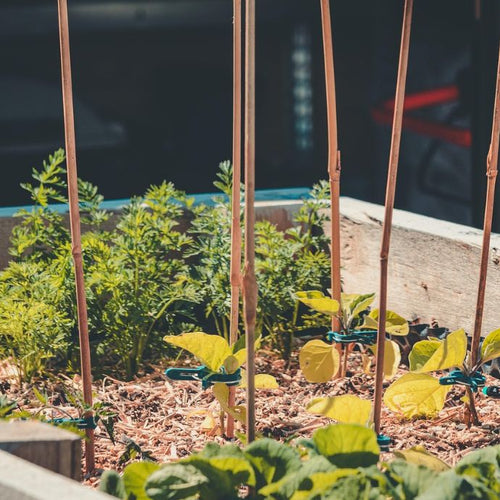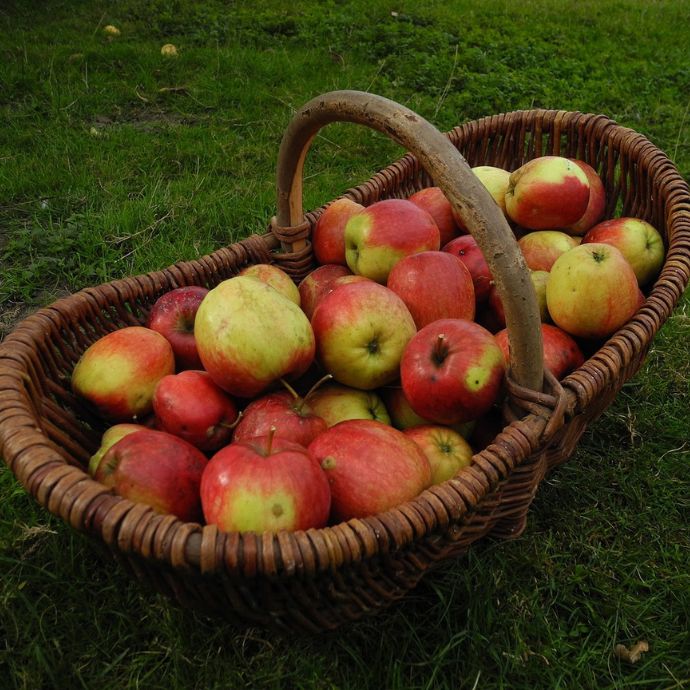Nashi Pear Trees: Discover Asian Pears

When people here in the UK think of pears, they tend to think of the tried-and-tested varieties like ‘Conference’ and ‘Williams’, but there’s another kind of pear that’s just as worthy of talking about – the Nashi (or Asian) pear. In this post, we’ll be exploring everything Nashi pear-related, including its history, flavour, some of the varieties we like most, and much, much more.
Jump to:
- What are Nashi pears?
- Nashi pear history
- Nashi pear flavour
- Different varieties of Nashi pear
- Differences between Asian and European pears
- Nashi pear tree growing tips
- Recipes using Nashi pears
What are Nashi pears?
Looking more similar to a russet apple than the elongated shape of European-style pears (Pyrus communis), Nashi pears (Pyrus pyrifolia) are large, broadly spherical and possess a yellow or golden-brown skin. The fruit has many names, including the Persian, Japanese, Chinese, Korean and Taiwanese pear, to name just a few. My personal favourite, however, has to be the zodiac pear – it just sounds really cool, doesn’t it? “Fancy a zodiac pear, old chum?” “Why, yes, yes I would.”

The history of the Nashi pear
First thought to have been cultivated three millennia ago in China, this pear went on to discover continent-wide appeal (as evidenced by the various geographical names the pear has been given over the years).
In Japan, Nashi pears have been grown since at least the Heian Period, an era also renowned for its literature and poetry – you can’t eat a poem, though! They’re still popular and widely cultivated in Japan today, particularly in the Chiba and Ibaraki Prefectures.

Nashi pear flavour
It’s not just their appearance in which Nashi pears are more similar to apples than European pears, their flavour (or texture, at least) can be quite similar, too. Asian pears have a high water content and a crisp, crunchy bite, much like that of an apple, while they boast a flavour profile with notes of melon, pineapple, honey and, of course, pear.
Many people regard Nashi pears as a sort of halfway house between apples and European pears, however we think that this is a disservice to them, as they’re undoubtedly excellent in their own right and deserve to be viewed as more than just a go-between.

Varieties of Nashi pear
There are a great number of Nashi pear varieties available worldwide, but here at Roots, we’re particularly fond of the ‘Kumoi’ and ‘20th Century’ (also known as ‘Nijisseiki’) pears, given their excellent flavour and the ease with which they can be grown. Other popular varieties include ‘Kosui’, ‘Shinko’ and ‘Hosui’.

Differences between Asian and European pears
The main difference between Asian and European pears is without a doubt their respective shapes. As mentioned earlier, Asian pears look more like apples than they do the bulbous/tapered pears we’re most familiar with. What’s more, their colours are often different, with many Asian pears having either a yellow or speckled appearance, while European pears often have a mottled, green skin.
Another difference is ripening times; unlike European pears, which are picked and then left to ripen a little longer off the tree, Asian pears are ready to eat as soon as they’ve been picked (just like apples). Finally, whilst European pears have a distinctive buttery texture, most Asian pears have a definite crispness to them.
Growing tips for Nashi pears
If you want to grow a Nashi pear tree – and let’s be honest, why wouldn’t you? – then there are a few tips worth knowing about. Firstly, most Nashi pears require a pollinating partner nearby in order to bear viable quantities of fruit, because they’re only partially self-fertile. You can either plant another Asian pear tree or a European pear tree.
In terms of planting your Nashi pear tree, a spot in full sun is best, while the soil should be fertile, moist (but well-drained) and deep enough to allow your tree’s roots to develop properly.
It’s worth regularly watering your Nashi pear tree for at least its first growing season. This will help its roots establish properly and give the tree a strong foundation from which to go on growing.
In terms of feeding, give your Asian pear an annual springtime feed with balanced fertiliser (something like Growmore should work nicely). Pruning requirements are similar for Nashi pears as they are European pears. Check out our comprehensive pear pruning guide for more information.

Nashi pear recipes
With their fine flavour and excellent bite, Nashi pears are delicious to eat straight from the tree, however you can also use them in a range of recipes (both sweet and savoury). If you have more of a sweet tooth, then poaching your pears in honey or syrup is a great option. Another recipe worth trying is an Asian pear galette.
For those for whom savoury flavours are the order of the day, then we’d recommend this Korean short beef ribs recipe from BBC Food, or this Nashi pear chutney, perfect for serving with Indian cuisine.

Final thoughts
These brilliant pears are worth trying at every opportunity, and given how expensive they are in the shops – almost £6 for a pack of two from Ocado! – it’s far easier (and nicer) to grow a tree for yourself. We’ve got lots of other pear tree guides you can peruse, including planting tips and signs on how to spot pear tree diseases.
Last updated: 28/11/2024





















